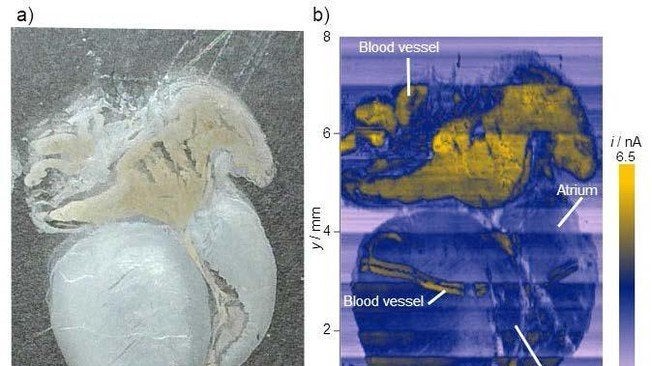Scientists employ endless innovation and creativity in fighting cancer, but now they have used something you might not have ever imagined - banana skins.
The new study was developing a technique for finding and killing the disease in the body, and involved the team conducting tests on the fruit’s overripe black spots, which contains the same typical biomarkers as skin melanoma.
Able to work on the fruit to develop a new technique for spotting the disease, the team made a breakthrough.

Traditional methods for detecting cancer need to employ chemicals such as dyes or fluorescent markers (known as contrast agents) to flood the biopsy and highlight potentially suspect areas.
But the new electrochemical microscopy, which could become a very useful medical tool, only requires the body’s own naturally occurring ‘biomolecule’ markers.
The electrochemical instrument is made up of eight soft micro electrodes, lined side by side, and is brushed across potentially-cancerous tissue samples where the device can scan the electrochemical response in the body.
The resulting electric currents are used by the researchers to reconstruct the image and shine a light on any areas that are producing abnormal chemicals. It gives an idea of both the physical structure of the tissue and composition.
They demonstrated this technique in three ways - the first was scanning mouse livers to show a certain type of nanoribbon being studied as a potential drug delivery mechanism, the second was to get a full image of a mouse heart, and the third differentiated between healthy human tissue and cancerous tissue.
Electrochemical imaging can also monitor the redox state of cancer cells, which is quite different from that of normal cells. It can therefore reveal if there are a large number of cancer cells and where they are located.
In the future they want to use this technique during surgery to kill them too, although Hubert Girault, author on the study, warned of the complications in doing so.
“We are perfectly capable of using electrochemistry to kill cancer cells on microscope slides and in petri dishes, but doing so in thick tissue is another story.”
The method would ideally use a burst of voltage to kill the cells after they are identified: “Around two volts, that’s not much, but it’s enough to generate oxygen radicals and eliminate cancer cells,” says Girault.
